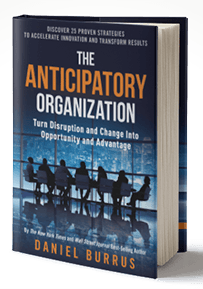The common view of customer service is one focused on reaction. A customer buys something, has a problem, issue or question—either during the sales process itself or later on—which is then handled by a customer service professional.
But, consider the possibilities of anticipating what sorts of problems and concerns customers are likely to have—well in advance of their voicing them.
That’s anticipatory customer service, and it can greatly improve your overall customer experience and your entire menu of customer service features. That translates to greater customer satisfaction and loyalty, not to mention increasing sales.
The Power of Pre-Mortems
One of the major problems with many forms of customer service is that it’s positioned after the sale and thus put in a reactive tactical position. In effect, when a customer raises an issue or a concern, a customer service person reacts, often as though they’re completely surprised by whatever the customer has pointed out.
Pre-mortems can head off that problem well before it happens. A pre-mortem is similar to a post-mortem in that it involves examining a product or service’s advantages and drawbacks—the primary difference being, while a post-mortem is done after a product or service has been introduced in order to improve the process, a pre-mortem identifies in advance what issues and concerns are most likely to come up. That allows customer service teams to pre-solve the problems and issues before the customer experience begins, and in turn, reduce the number of customer service calls and touchpoints that will need to be made.
Solving the (Real) Problem?
A core component of my Anticipatory Organization Model focuses on a tendency we all have to misinterpret what we assume is obvious. That’s particularly the case when it comes to customer service—more specifically, what a customer believes to be the problem or issue with a product or service may, in fact, be something completely different.
For example, a customer who’s returning an immersion blender may think that the cord is too short and is inconvenient to use in the kitchen. As it happens, the customer’s kitchen is simply poorly organized, meaning that the solution is not necessarily a different tool but an organization system that puts the cooking space into better order.
That underscores the benefit of not necessarily assuming that the “real” customer service issue is the one you see in front of you. By preparing to ask additional questions, a customer service professional can get at the customer’s genuine need—and solve a problem that wasn’t evident from the outset. Using the example above, the customer service rep might ask about the position of the blender in relation to where the outlets are and where the kitchen work is being done and suggest a better position for the blender that will also improve the flow of work being done. This sounds like it would take time, but it can take less time than filling out a product return form.
Customer Service as Shopping Experience
Another common oversight about customer service is that it’s exclusive to issues that crop up after a sale—the post-sale customer experience.
Anticipatory customer service begins well before that. For instance, what is the customer’s actual shopping experience? Did he or she wander into your store looking for a particular item with no one at the ready to help with directions? Was there a mobile application that allowed the customer to quickly call for a sales assistant so they didn’t have to try to find one? Was there an Alexa-type chat bot device in each aisle where the customer could simply ask a quick question and get an immediate answer, or ask for human help? Further, if the customer did talk with an employee, did the conversation fail to address the customer’s questions and real needs? Was it a consultative conversation making sure the customer got the best product for their real need, or a transactional approach?
Being anticipatory puts customer service at the front end of the overall customer experience and, in so doing, offers additional opportunities to elevate customer satisfaction. For instance, an Alexa-type chat bot or mobile store app as mentioned above empowers the in-store customer to get answers quickly, as well as readily connect with sales personnel, which greatly reduces the frustration of having a question with no one around to answer it. Add to that a digital loyalty card or component that alerts customers to short-term sales and other deals based on their needs profile, which will elevate and streamline the shopping experience itself and also saves them money.
This ties in with a valuable maxim that I repeatedly stress about customer service: the very best customer service is the least amount of customer service necessary. By improving the shopping and sales process on the front end through varied anticipatory strategies and concepts, you inherently minimize any complaints or problems that may occur later on. And, with an anticipatory mindset, you’re that much better equipped to deal with any issues and concerns than may crop up.
Ready to see the future and plan with greater confidence?

Get your copy at www.TheAOBook.com , you cover the FedEx shipping cost and I’ll cover the book cost!







Comments